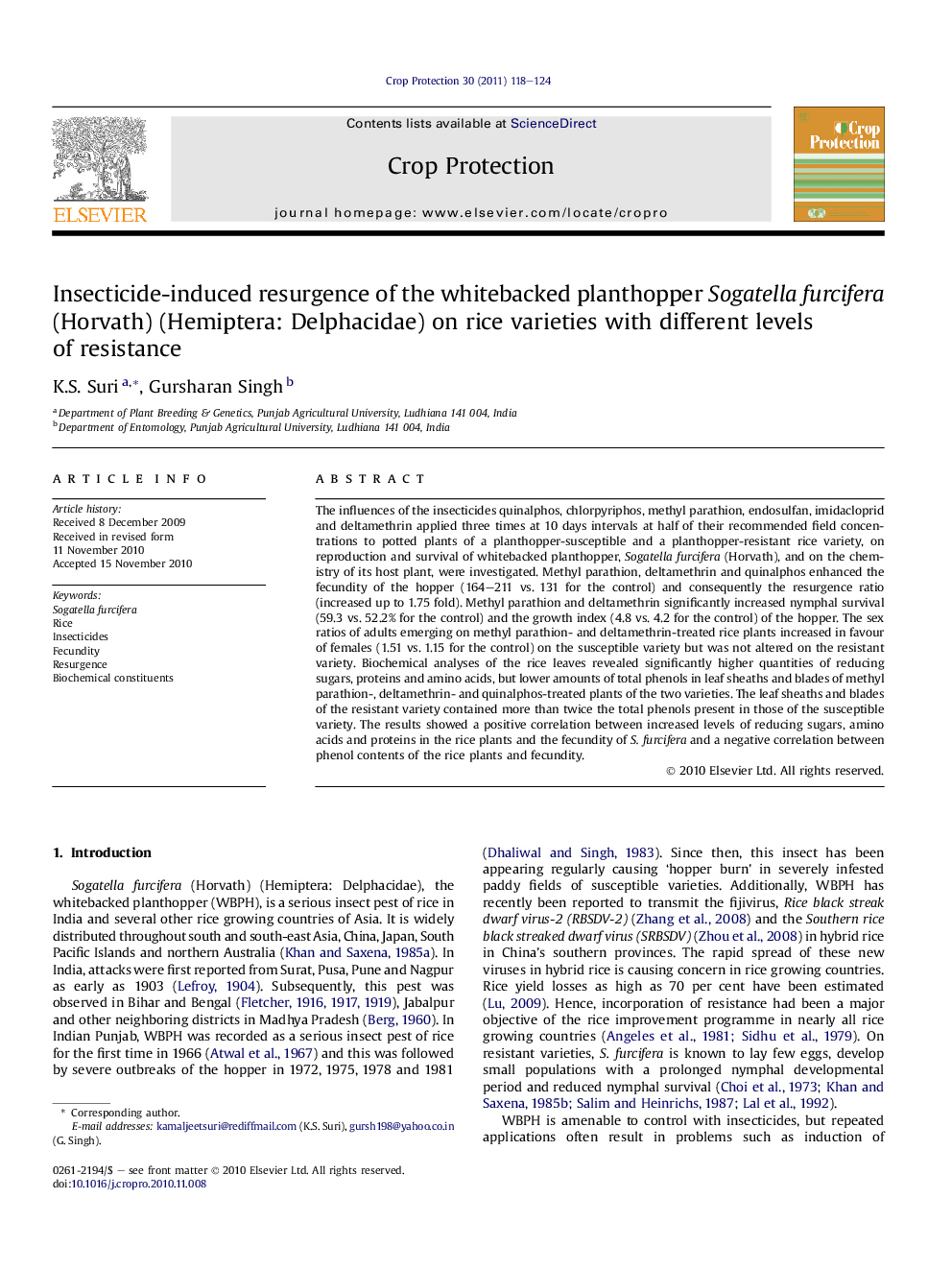| کد مقاله | کد نشریه | سال انتشار | مقاله انگلیسی | نسخه تمام متن |
|---|---|---|---|---|
| 4506643 | 1321323 | 2011 | 7 صفحه PDF | دانلود رایگان |

The influences of the insecticides quinalphos, chlorpyriphos, methyl parathion, endosulfan, imidacloprid and deltamethrin applied three times at 10 days intervals at half of their recommended field concentrations to potted plants of a planthopper-susceptible and a planthopper-resistant rice variety, on reproduction and survival of whitebacked planthopper, Sogatella furcifera (Horvath), and on the chemistry of its host plant, were investigated. Methyl parathion, deltamethrin and quinalphos enhanced the fecundity of the hopper (164–211 vs. 131 for the control) and consequently the resurgence ratio (increased up to 1.75 fold). Methyl parathion and deltamethrin significantly increased nymphal survival (59.3 vs. 52.2% for the control) and the growth index (4.8 vs. 4.2 for the control) of the hopper. The sex ratios of adults emerging on methyl parathion- and deltamethrin-treated rice plants increased in favour of females (1.51 vs. 1.15 for the control) on the susceptible variety but was not altered on the resistant variety. Biochemical analyses of the rice leaves revealed significantly higher quantities of reducing sugars, proteins and amino acids, but lower amounts of total phenols in leaf sheaths and blades of methyl parathion-, deltamethrin- and quinalphos-treated plants of the two varieties. The leaf sheaths and blades of the resistant variety contained more than twice the total phenols present in those of the susceptible variety. The results showed a positive correlation between increased levels of reducing sugars, amino acids and proteins in the rice plants and the fecundity of S. furcifera and a negative correlation between phenol contents of the rice plants and fecundity.
Research highlights
► Methyl parathion, quinalphos and deltamethrin enhance fecundity of S. furcifera.
► Imidacloprid, chlorpyriphos and endosulfan do not induce resurgence in S. furcifera.
► Higher amount of reducing sugars, proteins and amino acids in plants cause resurgence.
► Higher phenol contents in treated rice leaves impart resistance to S. furcifera.
Journal: Crop Protection - Volume 30, Issue 2, February 2011, Pages 118–124